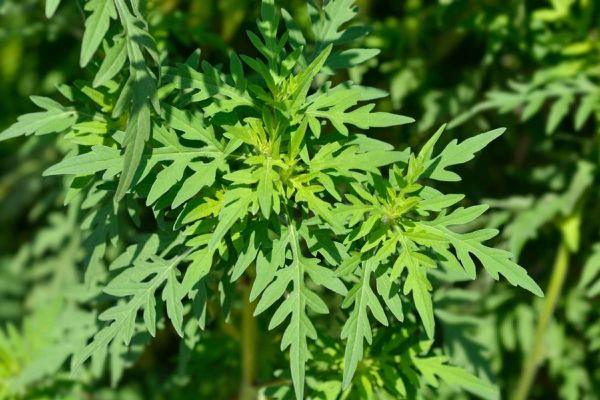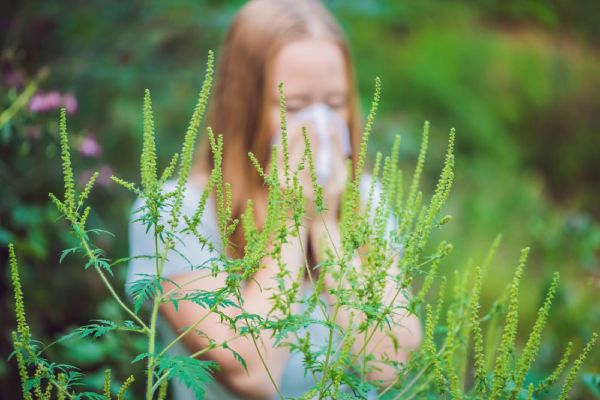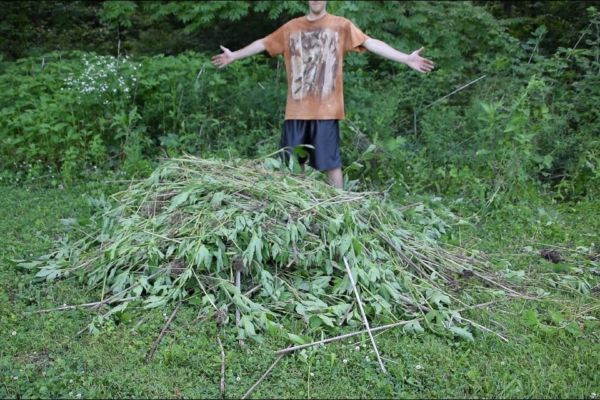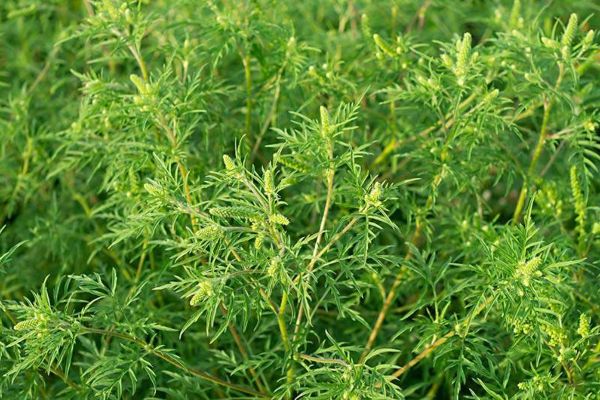Ragweed is a summer weed that often shows up in our yards. Its pollen is a major cause of seasonal allergies. Each plant can produce up to a billion tiny pollen grains that the wind spreads for miles. This makes ragweed a big problem in your yard and the whole area. So, getting rid of ragweed from your yard is important for the improvement of air quality and slowing down this unpleasant pollen’s spread.
In this article, we will discuss how to identify and eradicate ragweed so you never have to worry again about weeds growing in your yard.
Descriptions of Plants
Plant Types: Annuals, weed
Varieties: Common ragweed (Ambrosia artemisiifolia), Giant ragweed (Ambrosia trifida)
Family: Asteraceae
Genus: Ambrosia
Species: artemisiifolia
Season: Fall, Summer
Native Area: North America
Where is Ragweed found?
Ragweed grows in almost all regions, particularly in the East and Midwest. Ragweed plants are annuals. They usually start to pollinate in mid-August and continue till November when they emerge by sprouting in the spring. Ragweed is a tall plant up to 30 inches high. Its ragged or hand-shaped leaves resemble the leaves of the Artemisia plant. This plant produces two different types of flowers. The male flowers are produced in spikes at the top of the plant, 1 to 4 inches long, occasionally consisting of a couple of small side spikes. The female flowers are produced in sets below the male flowers. It starts producing green flowers, then changes to a yellow-green, and turns brown as it matures.

While ragweed seeds are beneficial to wildlife. The seeds are full of energy, which is important for birds and other animals in the fall and winter when it’s cold and food is limited.
Ragweed allergy: Causes, Symptoms, Treatment
As many as one in every five persons in the U.S. population suffers from allergies to ragweed during the high-pollen season. Allergies are basically caused because of a weak immune system, starting to regard any substance, such as ragweed, as an enemy. Your body releases chemicals to fight this substance off, and these chemicals bring about allergy symptoms. These symptoms include a runny nose, coughing, itchy throat, stuffy nose, itchy or watery eyes, a rash, or hives. If you have asthma, ragweed allergies can make it worse.
How is Ragweed allergy treated?
The best medication for a ragweed allergy depends on how bad your symptoms are. If you show symptoms of hay fever in late summer or fall, you really should see an allergist to determine if you have a ragweed allergy. An allergist will do this with a skin test. The medication for a ragweed allergy typically consists of antihistamines and other anti-allergy drugs. Start taking your medication two weeks before your symptoms are expected to be at their worst.

How can you avoid Ragweed pollen?
Most ragweed pollen counts are highest in late summer to early fall and peak in the morning. Avoid being outdoors during that time. Keep your home and car windows closed all the time. This will help keep as much pollen as possible outside. Pollen can also be carried into your home on your clothes in your hair, or on your pets. This can be reduced by changing your clothes after spending a lot of time outside, taking a shower before bed, and washing your hands after contact with pets that have been outdoors.
How to prevent Ragweed from taking over your garden?
Maintained your lawn or garden
Once you know how to identify ragweed, you are well-equipped to fight this persistent weed. First, maintain a healthy lawn, as that is one of the best ways to keep the ragweed from growing.
Improve soil and maintenance
Ragweed thrives in heavy, untilled soil and areas of thin vegetation and low fertility. To control it, mow your lawn often and regularly cultivate or hoe garden beds. Adding compost and organic matter to your soil will help keep weeds out of your yard.
Apply Herbicides
If ragweed have already begun their growth, there are several ways you can stop them. Herbicides are among the popular means for killing this weed. You can use selective weed killers targeting the ragweed while not affecting your grass. However, most herbicides have little or no effect at all on weed. Thus, choosing the appropriate herbicide product and making sure to follow carefully its instructions is important. Apply in mid-spring to early summer when the plants are still young and more vulnerable.

Withdrawal by Hand
Hand pulling can be an effective organic measure, especially in household gardens. Pull the weed before the flowering season, as every plant can generate over 60,000 seeds. It is very important to remember that chemical controls should always be the last option, whereas organic ones are safer and much more environmentally friendly.
Mulching
Mulching can prevent common ragweed growth. When you put down a layer of organic mulch, make sure to block sunlight from reaching the soil which prevents weed deeds from sprouting. Much improves soil fertility and helps prevent weeds from growing.
Regular monitoring
Lastly, keep a close watch on your lawn, especially during the growing season. The earlier you can identify and treat the weed, the less of a nuisance it will be to control it out of existence before it gets too big.
Also read, Plant and Grow Joe Pye Weed Like A Pro
Frequently Asked Questions
1. What is ragweed, and why is it a problem in yards?
Ragweed is a summer weed that can produce up to one billion pollen grains per plant. This pollen causes seasonal allergy rhinitis, also called hay fever.
2. How do I identify ragweed in my yard?
Ragweed is a tall plant that reaches up to 30 inches high. The leaves are very ragged or hand-shaped and much resemble the leaves of the Artemisia plant. The male flowers appear in spikes at the top of the plant and the female below. Flowers are green, turning yellow-green and finally brown as they mature.
3. What are the symptoms of a ragweed allergy?
Symptoms may include a runny nose, coughing, itchy throat, stuffy nose, itchy or watery eyes, a rash, or hives. Symptoms of asthma may get worse when ragweed pollen is common.
4. How can I stop ragweed pollen from affecting me?
If you have problems with ragweed pollen, during the late summertime and early fall when the counts are highest, stay indoors. Additionally, close the window, change clothes after spending a lot of time outside, take showers before bed, and wash hands after touching pets that go outdoors.
5. What are some of the most effective ways to remove ragweed from my garden?
Effective eradication methods include the general good health of the lawn, improving the soil by composting, and herbicides applied selectively against the weed. Hand-pull before it flowers, mulch to exclude light, and monitor regularly.
